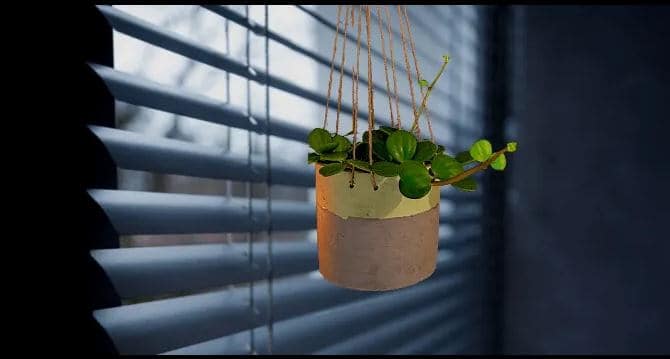Last Updated on January 5, 2023 by a Friendly Gardener
Houseplants are an important part of indoor décor, but can houseplants thrive in basement apartments, bedrooms, or entertainment spaces? Sunlight can be rare in basement spaces with very few small windows and many houseplants require abundant bright indirect light. However, several plants can grow and flourish in the low-light conditions that basements offer.
The Limits of Basement Windows
The principal consideration where basement windows are concerned is the amount of natural light that they can afford. In some cases, basement windows will receive a few hours of sunlight daily. The light might be direct but also may only provide indirect light. Luckily these low-light environments are perfect for several species of houseplants.
Another worry connected to basement windows is the temperature. Depending on the area where you reside and the condition and maintenance of the windows, drafts and temperature changes may characterize your windows. Some houseplants react negatively to abrupt temperature changes or too drafty locations.
Before selecting houseplants for your basement location, evaluate how much light enters daily into your basement window, if it is direct sunlight or indirect light, and any temperature considerations.
Plants That Can Live in a Basement
Many basements, despite windows, are dark, so it’s crucial to select plants that not only survive but thrive in low-light environments. You’ll also need to factor in how much humidity the basement space has, and if the basement space tends to be cool to colder when selecting your plants.
The Cast Iron Plant
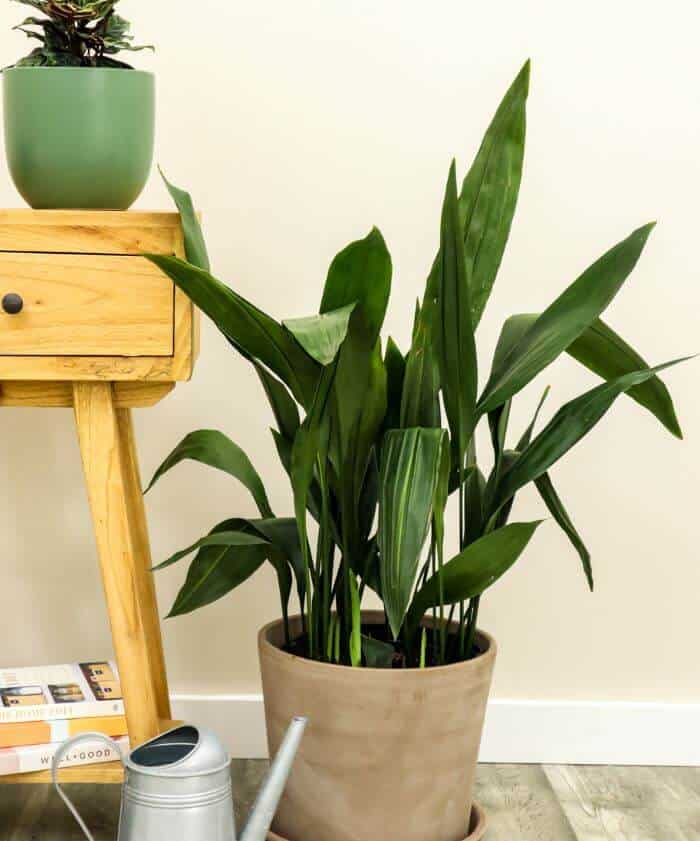
As this plant’s name indicates, it is cast in iron literally and is a plant that will thrive when neglected. Botanically known as the Aspidistra elatior, it asks very little from home gardeners as it flourishes in low-light environments and requires very little watering. Cast Iron plants are slow growers, so you won’t be repotting often. Foliage is elongated in a lovely green hue that will brighten your basement space. When the soil bed is dry to your touch, water, allowing all excess water to drain out. The Cast iron plant does well in both low and indirect natural light.
The Golden Pothos

Also called Devil’s Ivy, the Pothos is one of the easiest houseplants to cultivate. Although a vining plant, it will grow between four and eight inches in height and can climb poles or trellises if so desired. If you have a high basement window, the Pothos can cascade downward. Sometimes confused with a Philodendron, the Pothos is available in a variety of variegated cultivars including foliage that is white/green, chartreuse to dark green, or versions of yellow and green. Some highly variegated cultivars require greater light to maintain variegation so keep this in mind when selecting. A Pothos will thrive in any location but should avoid direct full sunlight. Water if the soil bed is dry when touched. It will flourish in medium to low indirect light.
The Peace Lily
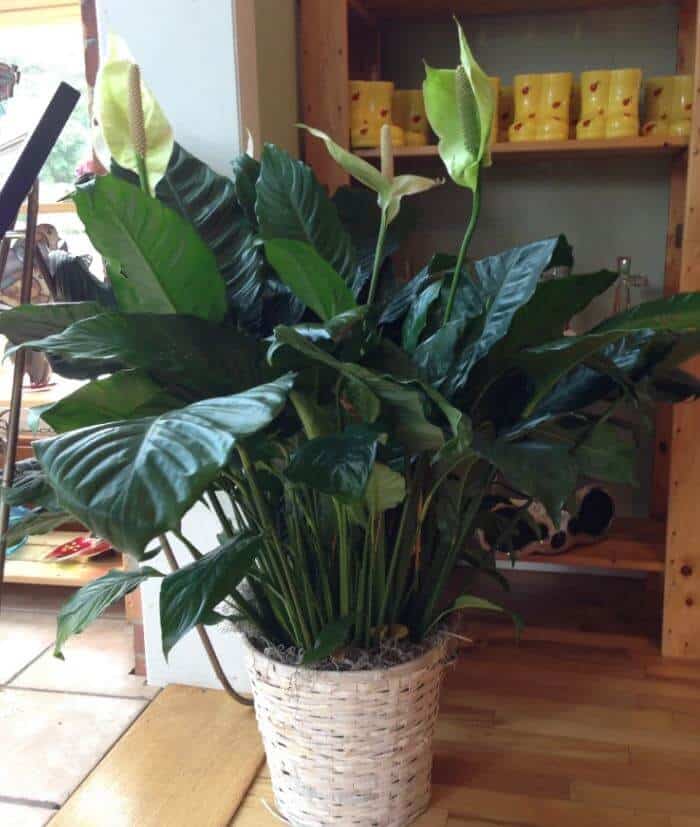
Large, oval-shaped elongated leaves in a deep dark green will bring a touch of elegance to your basement window. With a bit of light, they will reward you with pretty, white-hooded blooms that can last as long as two months. Botanically named the Spathiphyllum, this plant needs generous watering, otherwise, the leaves will begin to droop letting you know it’s thirsty. Not a lily, the peace Lily is toxic to pets, so you may want to forgo this choice if your dog or cat likes to sit in the window or munch on plants. Peace Lilies excel in low-light environments.
The Peperomia Obtusfolia

Peperomia is a lovely low-growing houseplant meaning if your basement window is small, these are a great choice. Also known as the Baby Rubber plant or Pepper Face, they generally do not grow higher than ten inches in height. A variety of cultivars offer various shapes of waxy or plastic-like leaves and hues. Native to the rain forest, the Peperomia likes humidity. Have a basement bathroom window? This is a great option. Water when the soil bed dries out and place in medium to low indirect light.
The Snake Plant
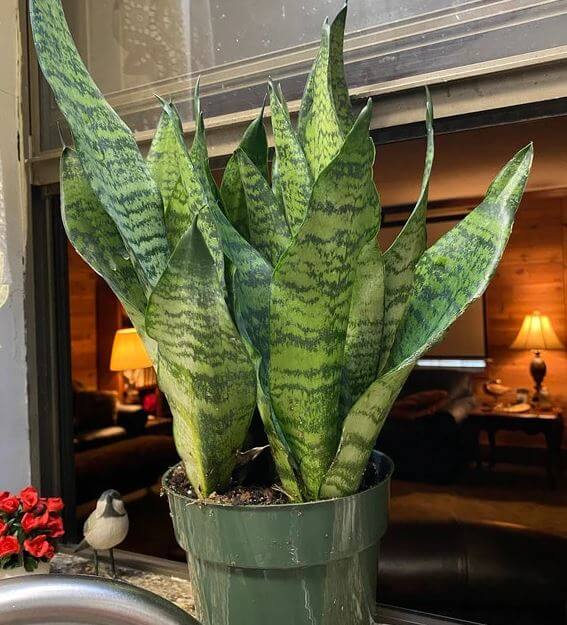
Among plants that grow well in basements, the Snake Plant merits consideration and is impossible to kill for those without a green thumb. Botanically known as the Sansevieria these plants are perfect even for windowless spaces, so if your basement has very little natural light, don’t worry. Like a succulent, its leaves will retain water. The biggest threat to this plant is not low light but overwatering. Better if you should forget to water it. It can be watered every three to four weeks if the soil bed has dried. A lover of low light conditions, it’s the perfect choice for basement windows that have limited indirect light. It should not be exposed to direct sunlight as foliage can scorch.
The Spider Plant
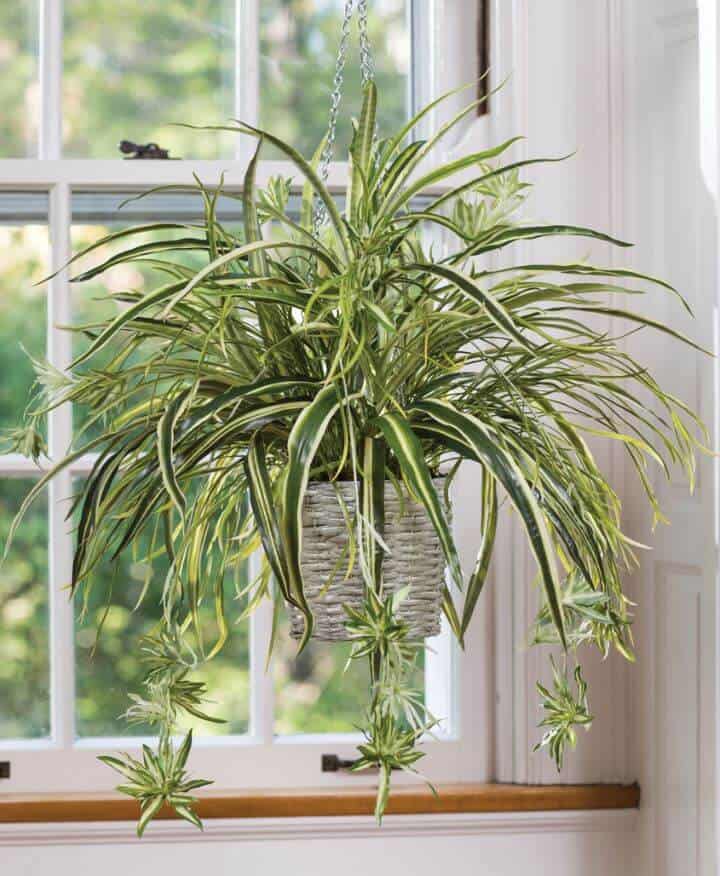
With no connection to spiders, this houseplant gets its name from its characteristic long wiry leaves. A South African native, it is botanically known as Chlorophytum comosum. An herbaceous perennial the Spider plant belongs to the Asparagaceae family. This happy houseplant is hardy and will thrive in conditions that are not ideal.
Slender, elegant, arching foliage will grow longish stems with small blossoms when mature. Once the blooms are spent, baby spider plants develop. These little plantlets will then develop roots. Spider plants are usually cultivated as hanging plants because foliage cascades downward, so a hanging basket in a basement window is perfect or a high basement window will favor their cascading nature. Indirect sunlight and a moist soil bed are ideal conditions for your Spider plant to flourish in.
The ZZ Plant

Zamioculcos zamiifolia affectionately named the “ZZ Plant” or the Zanzibar Gem is a top low-light choice. Imagine that this plant can survive in a room without windows or in a dark spot if a few fluorescent lights are present, making it perfect for a darker basement area. An African native, it flourishes in arid environments, so if you travel frequently or just forget the ZZ will survive.
Luscious dark green glossy leaves beautify any location. An independent houseplant the ZZ is forgiving even if neglected. Water when the soil bed’s top inch dries out. Low to medium indirect light is ideal.

